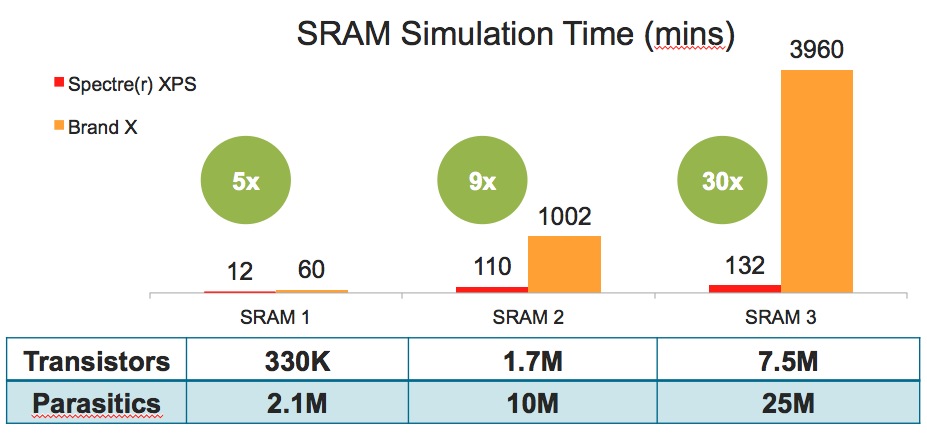Transistor-level circuit designers have an insatiable appetite to run numerous SPICE circuit simulations in order to determine circuit speed, current and power across Process, Voltage and Temperature (PVT) conditions. Just look at the number of PVT corners increasing as the technology nodes go to 16nm:

The good news today from Cadence is that they’ve developed a new FastSPICE circuit simulator, named Spectre XPS.
I spoke by phone last week with John Pierceof Cadence to get an update on what they’ve done to birth Spectre XPS.

What is Spectre XPS?
Spectre XPS is a new FastSPICE circuit simulator that uses techniques like partitioning in order to simulate large, extracted netlists with 10’s of millions of elements. Another technique is to reduce the large number of RC elements into a more manageable number, while retaining accuracy.
You can now simulate large, extracted netlists that just wouldn’t fit into Spectre APS and perform an accurate, dynamic IR drop analysis.
The new simulator accepts netlists in the familiar Spectre and HSPICE formats, runs Transient and DC analysis, uses Spectre commands and models, is compatible with all the PDKs from foundries, and integrates with Virtuoso ADE.
When Should I use XPS or APS?
As your netlist size grows into the millions of elements then Spectre XPS makes sense, while for smaller designs you can continue to simulate with Spectre APS. The UltraSIM product was originally targeted at hierarchical designs, however that simulator will go into a maintenance mode because Spectre XPS can handle 10’s of millions of elements now.
An SRAM design was simulated with Spectre XPS and it had some 30+ million elements (25M RC, 7.5M MOS), and used up only 7.5GB of RAM:

The capacity is there, plus it should benchmark well against competitor circuit simulators in terms of speed. In general you can expect the XPS simulator to be 5X to 15X faster than APS at comparable accuracy levels:

If you use AMS Designer for mixed-signal simulation, then stay tuned for when Spectre XPS gets integrated into that.
Continue to use Spectre APS for smaller designs, and for highest accuracy circuits like: BER of an ADC, PLL Jitter.
Learning Spectre XPS
If you’re an existing Spectre user then learning XPS takes only a few minutes. You can trade off speed versus accuracy using a simple setting with 5 levels. That’s quite an improvement from using UltraSim which had lots of switches and settings for tuning.
Summary
Cadence has a new FastSPICE circuit simulator that increases capacity to 10’s of millions of devices, allows IR drop analysis for extracted netlists, gives the competition something to worry about, and works well simulating embedded memories. If you’re thinking about evaluating FastSPICE circuit simulators, then place Spectre XPS on your list.
Share this post via:






Comments
0 Replies to “Spectre from Cadence Goes FastSPICE”
You must register or log in to view/post comments.